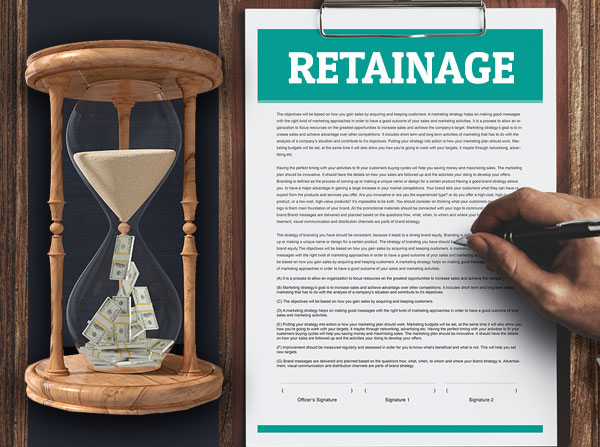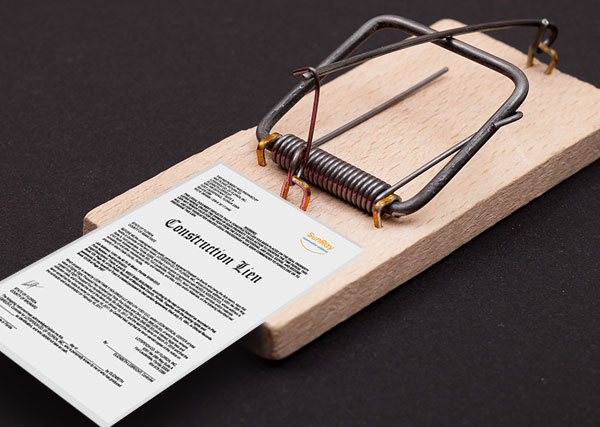Construction Contract & Lien Basics that Will Get You Paid Faster: Part 1 - Construction Contract Basics
Construction contracts are important documents you will need on a construction project. Learn about contract terms, contractual provision, and residential construction disclosures.
Last updated:
Nov
24
,
2025
Published:
Apr 27, 2024
15 Mins
Read
This blog will talk about whether or not your contract/subcontract should be in writing, if your estimate, proposal, or invoice is an enforceable contract, what important contract terms should be in your agreement, residential construction disclosures, what a contractual provision is, whether mediation, arbitration, or litigation should be in your contract, what a pay-when-paid clause is, and how to deal with it.
This 6-part blog comes from a webinar presented by SunRay Construction Solutions and Alex Barthet. Alex is a board-certified construction lawyer who serves clients in the state of Florida.
Part 1: Construction contract basics
Part 2: Notice to Owner do’s and don’ts
Part 3: Lien and bond rules and exceptions
Part 4: Waiver and release best practices
Part 5: Lien law traps to avoid
Part 6: How to get paid faster
First, we will discuss some construction contract basics.
Does my contract/subcontract need to be in writing to be enforceable?
This one the most common questions we get the answer unequivocally, is no, it does not need to be in writing. We strongly recommend that it should be, but it is not a legal requirement.
If you go to someone’s house and offer to paint it for $5,000 and they say yes, you have a contract. There may not be a single piece of paper written, no email correspondence or text messages, but make no mistake, you have a contract.
a. Oral contracts are valid and enforceable
All oral contracts are valid and enforceable. Where you may run into an issue is if it is only an oral agreement, people argue about the terms.
b. Oral agreements are subject to more disputes
So these convenient memories about what the terms were, create the problem. And that is why you want a written agreement so that you do not have to worry about these issues.
c. Work under oral agreement can still be liened or the subject of a bond claim
What is important to understand is, if all you have is an oral agreement with nothing in writing, or something like email correspondence or text messages that support your position about their being a contract and what the terms are, you absolutely have rights to lien the project and/or to make a claim on any applicable payment bond.
So do not think that just because you do not have anything in writing or a formal written agreement that you do not have lien rights. Because you absolutely do.
d. Watch out for certain residential construction disclosures that must be in writing
If you do residential construction work in Florida, there are certain mandatory disclosures that are required when you work for Mr. and Mrs. Homeowner as the primary contractor. So, if you are a vendor and you deliver materials to someone’s house, those disclosure rules do not apply.
But if you are a general contractor, and you do work for Mr. and Mrs. Homeowner there are certain written disclosures that are required. This is one of the only requirements we see for something to be in writing in Florida.
Is my estimate, proposal or invoice an enforceable contract?
The answer to this is absolutely.
a. It will be governed by its terms
It will be governed by the terms that are in your estimate, so make them good.
b. Work under an estimate
It is important to have certain minimum terms in your proposal or estimate and with an oral agreement you can absolutely lien or have a payment bond claim if that is the only document you have. So, if all you have is an estimate that is approved, you start the work, and you are not paid, you can lien the project for the materials or work that you provided.
What are the most important contract terms that should be in my agreement?
So what are the most important contract terms that should be in your agreement whether it is a proposal or an estimate?
a. Get it in writing
As mentioned above, it should be in writing, so you should have a written agreement that memorializes whatever the parties’ understanding is.
Read more: Boo! The Scariest Contract Term That’s in Your Contracts (and You Don’t Even Know It)
b. List exclusions and assumptions that correspond to your scope, price and schedule
You should list all exclusions and assumption that correspond to the scope, price, and schedule that is in your proposal. For example, if you know there is work that is not included in your price as a material supplier, you are going to deliver materials to the job site, they want to stock the material on each floor of a building.
If your price does not include the stocking, you should have an exclusion in your terms and conditions that says all pricing excludes stalking, and that the price only includes delivery to the ground floor elevation at a location designated or that you determine. This ensures that someone won't come back and say that you were supposed to deliver all the product, with one palette on each floor, and that that was supposed to be in the price.
It is those little things that we find are where disputes occur and as a result if you can think about those issues and put them as exclusions in your quote, estimate, or in your contract, it will go a long way to resolving any dispute. The reason is because if someone tells you that you were supposed to stalk product on every floor, you can turn to your quote, say that you are actually not, and point to that provision in your estimate.
For example, there is someone who installs saunas and hot tubs in buildings. There is an issue on whether or not this person had an obligation to install the electric components that would have connected the hot tub to the main line. The agreement is pretty clear that it is not in this person’s scope, but there is some slight ambiguity in the language and in hindsight the language could have been cleaned up. But it is now the source of dispute between him and the contractor.
So, it is these kinds of things that you want to think about. Think about issues you have had in the past, conversations, arguments, and disputes, make a list of exclusions and put them in your quote.
c. Include interest and legal fees
The maximum legal rate of interest is 18%. That is 1½ % per month. If you do not list an interest rate for unpaid balances in your agreement, then all you can recover is the current legal rate. That is an amount that fluctuates every quarter, managed by the Secretary of State. It is currently at around 5½ % and sometimes it can be as low as 4%.
It really depends on the market, and it is determined by the state. So, if you want a higher interest rate, you need to have it in your quote or proposal that you are going to get 18% per year.
You also want to be able to recover your legal fees, so you need a provision that talks about getting those legal fees.
Learn more: How to Recover Your Legal Fees When You Collect A Debt
d. Include a right to stop work (or not as a general contractor
You want to include a right to stop work if you are not the general contractor. Many contracts we see as for subcontractors include a provision that says even if you are not being paid as a subcontractor, you have to keep working and cannot stop working. That is very onerous for you as a subcontractor.
So, if you are a subcontractor, you want to make sure that you have the right to stop work if you are not being paid.
e. Sample stop work provision
Here is a sample stop work order provision:
Subcontractor can slow or stop work without liability or penalty if it has not been paid its draw request in 30 days after submission.
As a general contractor, you would not want this type of provision, but as a subcontractor or sub-subcontractor you definitely do.
f. Define the change order process
Another term to consider is the change order process. It is ripe for dispute, so it is important to spend some time thinking about it. Make sure of course that you understand how it works and if there is a dispute in the change order process, you need to know how it is going to be resolved.
g. Define what happens if you (or the job) are late
You need to understand what happens if you or the job are late. Many contracts have what is called a “no Damage for delay’ clause and it is a provision that says under no circumstances as a subcontractor, are you going to be entitled to money if there is a delay. All you will get is more time. That may be okay and it is subject to certain additional rules, but you need to understand that going in. So, if you think you are going to get extra money if the job is late, you need to be aware of that.

h. Understand that you may be obligated for work and materials ‘reasonably inferable’
Many contracts include a provision that say you are responsible for all that is in the plans and is reasonably inferable in those plans.
For example, you are an owner of a property and the contractor failed to install all of the wires that connected the thermostats to the A/C units. After taking a look at the plans, you see that it is missing from the plans, and you realize you could have done a better job of picking your architect or engineer. Because the plan does not show the conduit and the wire.
The contractor says he does not have to provide it since it is not in the plans, but you point to the contract and say that he has to because he is not just obligated to provide everything that is not only in the plans, but reasonably inferable from the plans. And it is reasonably inferable that as the owner if you have an air-conditioning unit, you are going to need a thermostat to control it.
The contractor agreed and $10,000 later of his own money, he installed the necessary conduits and lines to connect the thermostat. So this is an example of a situation in which it may not be in the plans but you may own it, so be aware of this.
i. Exclude the applicable plan pages
Include or exclude the applicable plan pages. With any contractor and owner, what they do is list every plan page. You may be the plumber, and when you sign your construction contract, it is going to list, not just the plumbing pages, but the architectural, structural, and electrical pages. The reason this is done is because if something is missing from the plumbing pages, you are going to be responsible because your contract includes the structural, electrical, and mechanical pages.
So, if you are going to get a job, you need to make sure that you have reviewed all the pages, not just the pages related to your scope. Or if you have not, then you need to remove them from your contract so that you are not obligated for those items that may have been left off the plan pages.
j. Define venue and prevailing party legal fees
You want to recover your legal fees if you have to sue someone and you want to define where the dispute takes place.
Which is better, mediation, arbitration or litigation and which should be in my contract?
Simply put, it depends.
a. Mediation should be mandatory (maybe even a meeting of principals)
Mediation should be mandatory. It is a process in which the parties meet with a neutral third party. The cost of that third party is split. The third party is not a decision maker but just a facilitator to try resolve the dispute between the parties.
We find that most cases resolve in mediation, so mediation is always a good way to avoid having to incur costs with lawyers in litigation or arbitration.
b. Arbitration can be faster, but is probably more expensive than you think
Arbitration is another way to resolve your disputes. It is like a private court. It can be faster but it is probably as expensive if not more expensive than litigation, and you have no right to appeal. If you choose to arbitrate in your contract, that is typically a binding decision, which means that you will have to arbitrate your case and not litigate. This means that you cannot change your mind later to litigate the case. In court you have to arbitrate.
And you will need to pay the arbitrator just as you would pay a lawyer. The costs are split but that is going to be $300 or even $500 an hour for each arbitrator. Sometimes you may even have three arbitrators, and everything they do you have to pay for, plus you pay an arbitration fee. So, you need to know that there is a significant cost associated with arbitrating your case.
c. Litigation is more predictable (case law) with appeal rights, but slower
Litigation tends to be more predictable. Case law is used, so attorneys can site an old case law to a judge and the judge is supposed to follow the law. In arbitration, they do not have to. You can site a case to an arbitrator and they are not obligated to follow the law. There is a right to appeal in litigation but the process is generally only made slower by the pandemic.
d. If you agree to arbitration, you may be stuck
So, these are the options you have and you get to choose which one you like. Just make sure that if you choose one or the other (arbitration or litigation), as the ultimate way to decide the outcome of your case, that you are going to be bound by that decision after you sign the contract.
Protect Your Rights with a Notice to Owner
Sending a notice to owner is the first step to secure payment on construction projects. Learn how a notice to owner Florida helps protect your lien rights and ensures you get paid.
What is a pay-when-paid clause and how do I deal with it?
We will now discuss pay-when-paid clauses because this is a significant issue that exists in almost every construction contract.
a. Contractual provision to shift the risk of nonpayment to lower tiers
A pay-when-paid provision is a contractual provision that shifts the risks of nonpayment to lower tiers, typically between the general contractor and the subcontractor. But it can also exist between a subcontractor and a sub-subcontractor.
So, if you are a subcontractor and you hire sub-subcontractors, you can include a pay-when-paid provision in your sub-subcontract.
Learn more: Pay-When-Paid Sucks, So Do This to Get Paid Anyway
b. Sample invalid pay-when-paid provision
“Under no circumstances shall the contractor be obligated to pay the subcontractor until funds have been advanced by the owner.”
The above line is not a valid pay-when-paid provision.
c. Sample valid pay-when-paid provision
Below is a valid pay-when-paid provision:
Final payment ___ shall be made within 30 days of completion of the construction project, acceptance by the Owner, and as a condition precedent, receipt of final payment ___ from the Owner.
The underlying terms are what are key. The court has made it clear that you need certain magic language to make a pay-when-paid provision enforceable. And that magic language is really simple. It has to say ‘condition precedent’ or ‘contingent upon.’
So if you have the magic language in the provision, it is enforceable, but if it is missing, it is probably not enforceable.
d. Most well-drafted contracts contain enforceable pay-when-paid provisions
It is very rare (maybe 1 in 1,000) to see a construction contract that does not have the magic language.
e. Strike or modify the ‘magic language’
So the question is, if you are looking to invalidate the pay-when-paid provision, what are some of the things that you can do? One is that you can strike the provision which probably will not happen because the other side will likely not agree. Or you can strike the magic language, and you get lucky because the other side may agree to this.
f. Add a ‘stop work provision’
While it does not take care of the pay-when-paid provision, it is critical for you to add a stop work provision such as the one below:
“Subcontractor can slow or stop work without liability or penalty if it has not been paid its draw request in 20 days after submission.”
This does not mean that the pay-when-paid provision is invalid. What it does mean is that if you are not being paid, you at least get to stop working, which will help stop the bleeding.
For example, there is a contractor who has some version of this in their contract and due to some hacking incident between the owner and the contractor, the October pay request of $3 million was misrouted via a hacked wire to somewhere else. The $3 million payment for October was not made and there is a provision in the contract that says if the contractor is not paid that they get to stop work. So, they stopped work. Without that provision, the contractor would have been obligated to continue working without payment.
g. As a general contractor, push back on changes
Obviously, if you are a general contractor you want to push back on these changes because you want to force your subcontractor to keep working even if they have not been paid.
h. As a subcontractor, check the prime contract
One of the other things that you can do as a subcontractor is to check what the provision in the prime contract says about final payment.
If you are a subcontractor, your subcontract probably incorporates the prime contract. That prime contract probably has a provision that says the owner does not have to pay the contractor the final payment until the contractor has paid all of his or her bills and provided releases to the owner. If the owner does not have to pay the contractor until the contractor has paid the subcontractors, but the subcontractors pursuant to the pay-when-paid are not paid until the owner pays the contractor, there is a problem. Because everyone is waiting for everyone else to pay.
The courts say that when this situation occurs contractually, the subcontractor wins and the general contractor loses. So it is important to look at the prime contract to see if this situation exists. While it is very rare to see a pay-when-paid provision that is invalid, it is very common to see this kind of conflict in the prime contract and subcontract. So, as a subcontractor, this is one way to invalidate the pay-when-paid provision.
As a general contractor, keep the trailing releases through final payment
As a general contractor you solve this problem, not by amending your subcontract but by amending your prime contract to ensure that you continue trailing releases even after the final payment. Meaning that you do not want to make the owner a promise that you are going to pay all your bills before they issue the final payment.
i. Secure your rights on the contractor’s payment bond
You want to secure your rights on the contractor’s payment bond and secure your lien rights.

As a general contractor, be aware of the risk
As a general contractor, you need to be aware that if you issue a payment bond on a project and you have not been paid by the owner, your bonding company is not able to enjoy the benefit of your pay-when-paid provision. This means that even if you as the contractor do not owe the money to the subcontractor, because you have a pay-when-paid provision in your contract, your surety under most types of bonds, does not have that defense available to them.
j. Do not forget subcontractor bonds
This is exploited regularly by subcontractors. When they are owed money and they cannot get it from the contractor because of the pay-when-paid, they go after the subcontractor's bond and may still be able to get paid.
If you are a sub-subcontractor, just know that the subcontractor may in fact have a bond as well. This bond is not recorded in the public record, so the way you are going to get it, is by asking the general contractor for a copy.
k. Secure your lien rights
Securing your lien rights is a great way to overcome a pay-when-paid provision. The owner cannot use the pay-when-paid provision to defeat your lien. So securing your lien rights is critical.





.jpg)







